by Deborah Abernethy and Mike McLeod
$4,339 (12 bids, 6 bids): Mason 1858 Fruit Jar Tudor Rose Light Amber Golden Yellow Quart A62
For your consideration, we have a Tudor Rose Mason fruit jar in the very rare light amber or golden yellow color. The bottom is marked “A62.” Condition is excellent, just one shallow chip and minor roughness to ground lip. There may be a few light surface scratches. As shown in photos, there are many bubbles of varying sizes. There is a line of very fine bubbles, or what could be a soot trail, that traverse about two-thirds of the distance around the jar. It starts around the Tudor Rose and angles down around the front and ends under the “TH.”
With all of the bubbles and wavy glass, this jar plays beautifully with the light. Because of the line of bubbles and other manufacturing process imperfections, this will be a very distinguishable and one-of-a-kind jar. There will not be another one that looks the same.
The color is very even throughout jar; it’s hard to photograph and not have differing shades of color showing. The zinc lid is just a generic Ball lid.
(Photos courtesy of eBay seller idahoantiqin.)
DBA: This must be a record. There is a vast range of prices for similar jars. The light amber is less prevalent in the market, but most prices for similar jars are $1,500 and $1,700. Beware that there are modern 1858 jars that mean it is in the 1858 jar shape, not that it is an 1858 jar. The modern 1858 light amber fruit jar can be found for $10. Big difference!
John Landis Mason received a patent for his invention with the threading process for the closure on bottles and jars. This patent was awarded on November 30, 1858. He did not make jars and bottles at that time. His improvement revolutionized home canning in the United States. Two things were important: the jars were re-usable, and the lid had barriers which eliminated the metallic taste.
Bottle collecting is a big market in America, both at the high end and inexpensive low end of the market.
$3,377 (6 bids, 5 bidders): 1887 Felt & Tarrant Mfg. Co. Comptometer Adding Machine Calculator
This old 14 1/4-inch long machine has two patent dates of 1887. I am not familiar with how these machines work, and I don’t want to break anything trying to find out, but I did push some buttons, and they did turn the bottom numbers. It has some wear to the patina but not bad overall. This has to be one of the earlier models. Sold as you see it.
Lots of businesses had these machines and similar ones can occasionally be found at various auctions. Based on those auction results, the seller really made out well. Many of those auction records were also using the 1887 patent as the date when clearly
most were later models. It’s like the Barbie doll mark of 1959 stamped on the upper back of Barbie dolls. That does not mean that it is from that first year of production!
$4,935 (44 bids, bidders): Antique Als Ik Kan Stickley Small Round Oak Table Gustav Labeled From 1902-1903
All original, this piece is an extremely fabulous rare find indeed! I researched this and found the following on the web from The Stickley Museum. I just want to mention that this table has the very first Stickley Shop Mark.
Collectors use the Stickley shop mark as a hint to pinpoint the date of production, and the Stickley brother responsible for making the furniture. They are not completely accurate, but they can help to identify a piece.
United Crafts Mark 1902-1903: Gustav Stickley takes the rare step of labeling his Craftsman furniture with a shop mark. He chooses a joiner’s compass as his logo with the Flemish phrase “Als Ik Kan” (“To the best of my ability”) inscribed within and his signature underneath.
This superb, sturdy piece is made of mission oak. It measures 28 inches tall. The round top measures 24 inches in diameter. It weighs 27.2 pounds. It is in great antique, vintage, used condition with wonderful normal wear from age and use. For its age, this table has been treated extremely well and has really been taken care of. No real problems anywhere.
(Photos courtesy of eBay seller 81401christie123)
DBA: These tables are rare, and the buyer got a good deal. This is a typical auction price for one of his early tables. Gustav Stickley was influenced by the British Arts and Crafts Movement and the writings of William Morris and John Ruskin. In the United States, he developed what would become known as the Craftsman style.
$8,988 (22 bids, 11 bidders): Daniel Davis Charles Page Reciprocating Armature Electric Motor Engine, c. 1838
No reserve, rare is a word that does not adequately describe this item. This is an original antique circa 1838 Charles Grafton Page or possibly 1840 Daniel Davis Reciprocating Armature Electric Engine. This is one of the earliest electric motors, and very few are known to exist. It is in good condition with the base measuring 13 inches long by 5 1/2 inches wide and overall standing 8 inches tall at its highest point. The wheel measures 3 3/4 inches in diameter. It appears to be in functioning condition. The circuitry under the base is intact.
If you’re bidding on this, I’m assuming you already understand how important this motor is, and if you are not familiar with this historic motor, just search the title on the Internet, and you will find an abundant amount of information regarding this fantastic antique electric motor.
This is likely a once-in-a-lifetime opportunity.
(Photos courtesy of eBay seller gypsiegirlz.)
DBA: The one in the museum has a polished wood base, which was probably restored to make it look good. I know they say they don’t change things, but as long as the repair is reversible, conservation experts will. That is how rare this object is.
Dr. Charles Grafton Page was the inventor with Daniel Davis, Jr. in building the machine. Dr. Page, in journals, is listed as an electrical experimenter and inventor, physician, patent examiner and professor of chemistry. Daniel Page, Jr. received a patent for a process to apply color to daguerreotypes and was listed as a daguerreian and instrument maker. He ran the equivalent of a technology think tank.
Dr. Page also built a prototype electric locomotive funded by the U.S. Senate in 1851 which was to run from Washington, D.C., to Baltimore, MD. It failed when the clay separators in the primary battery cells cracked, and the solenoid coils overheated and shorted out. Steam engines remained more practical for power at this point.
This is so rare that I am limited on choosing comparable objects. An 1882 Edison bipolar motor was sold for $5,000. I don’t think that is a good comparison, an 1838 motor and an 1882 motor. My gut says this was a good buy.
Deborah Abernethy is a certified appraiser with the International Association of Appraisers. She can be contacted at 404-262-2131 or Deborah@expert-appraisers.com. Her website is www.expert-appraisers.com.



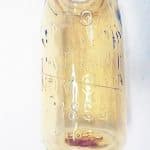
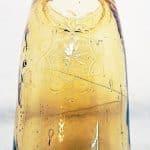
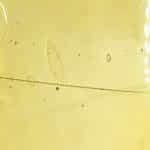
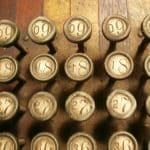
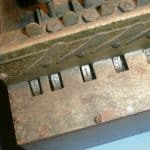
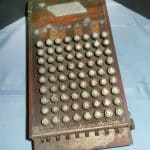
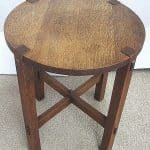
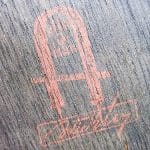
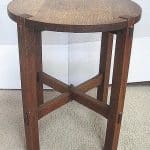
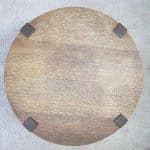
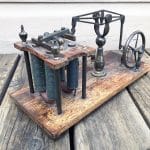
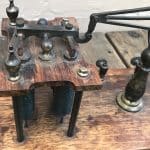
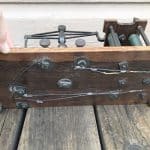



Related posts: